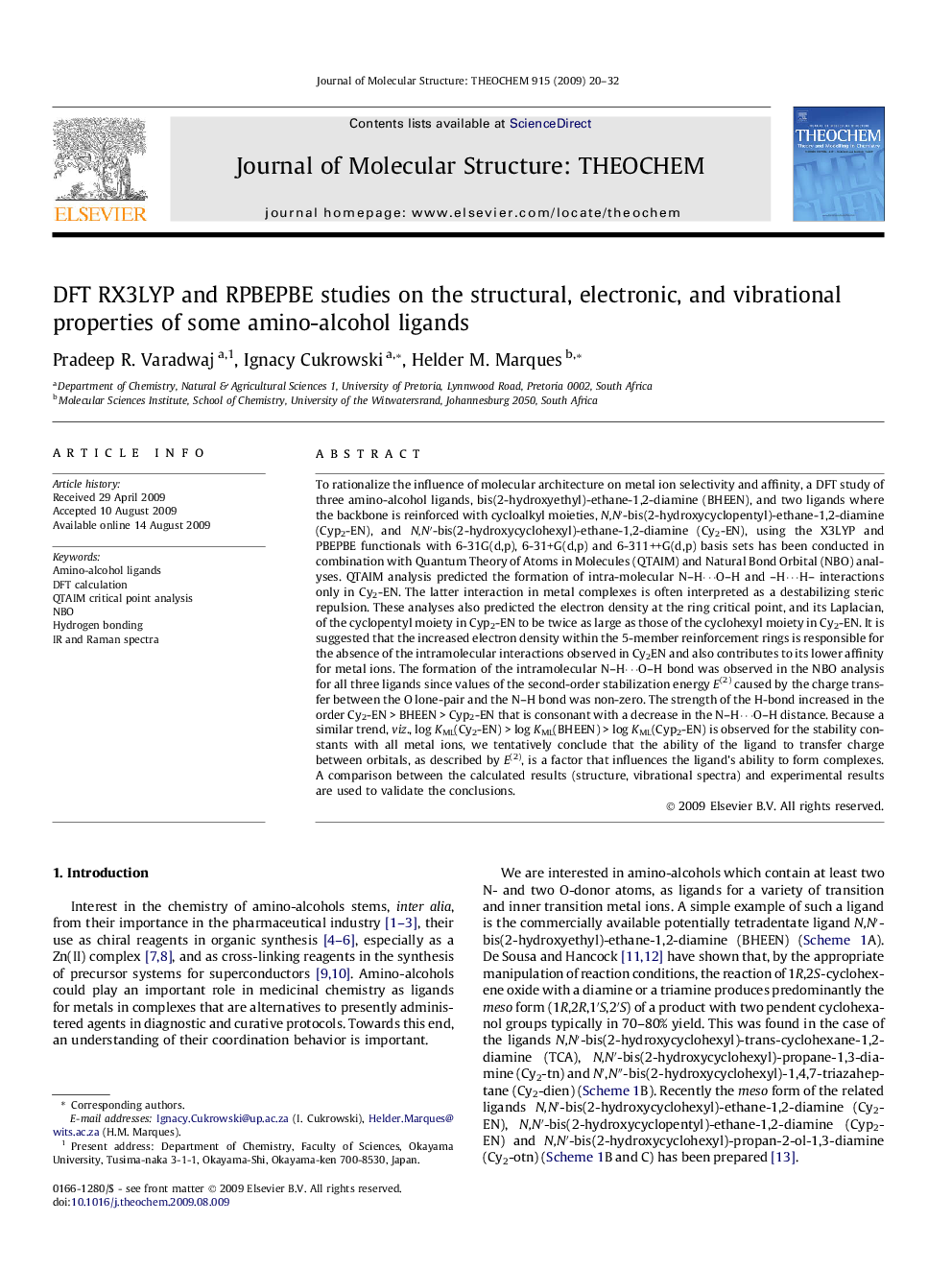| Article ID | Journal | Published Year | Pages | File Type |
|---|---|---|---|---|
| 5417138 | Journal of Molecular Structure: THEOCHEM | 2009 | 13 Pages |
Abstract
To rationalize the influence of molecular architecture on metal ion selectivity and affinity, a DFT study of three amino-alcohol ligands, bis(2-hydroxyethyl)-ethane-1,2-diamine (BHEEN), and two ligands where the backbone is reinforced with cycloalkyl moieties, N,Nâ²-bis(2-hydroxycyclopentyl)-ethane-1,2-diamine (Cyp2-EN), and N,Nâ²-bis(2-hydroxycyclohexyl)-ethane-1,2-diamine (Cy2-EN), using the X3LYP and PBEPBE functionals with 6-31G(d,p), 6-31+G(d,p) and 6-311++G(d,p) basis sets has been conducted in combination with Quantum Theory of Atoms in Molecules (QTAIM) and Natural Bond Orbital (NBO) analyses. QTAIM analysis predicted the formation of intra-molecular N-Hâ¯O-H and -Hâ¯H- interactions only in Cy2-EN. The latter interaction in metal complexes is often interpreted as a destabilizing steric repulsion. These analyses also predicted the electron density at the ring critical point, and its Laplacian, of the cyclopentyl moiety in Cyp2-EN to be twice as large as those of the cyclohexyl moiety in Cy2-EN. It is suggested that the increased electron density within the 5-member reinforcement rings is responsible for the absence of the intramolecular interactions observed in Cy2EN and also contributes to its lower affinity for metal ions. The formation of the intramolecular N-Hâ¯O-H bond was observed in the NBO analysis for all three ligands since values of the second-order stabilization energy E(2) caused by the charge transfer between the O lone-pair and the N-H bond was non-zero. The strength of the H-bond increased in the order Cy2-EN > BHEEN > Cyp2-EN that is consonant with a decrease in the N-Hâ¯O-H distance. Because a similar trend, viz., log KML(Cy2-EN) > log KML(BHEEN) > log KML(Cyp2-EN) is observed for the stability constants with all metal ions, we tentatively conclude that the ability of the ligand to transfer charge between orbitals, as described by E(2), is a factor that influences the ligand's ability to form complexes. A comparison between the calculated results (structure, vibrational spectra) and experimental results are used to validate the conclusions.
Related Topics
Physical Sciences and Engineering
Chemistry
Physical and Theoretical Chemistry
Authors
Pradeep R. Varadwaj, Ignacy Cukrowski, Helder M. Marques,
